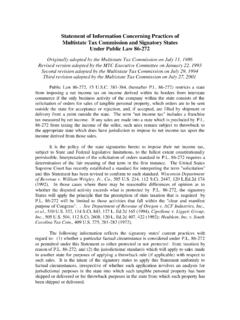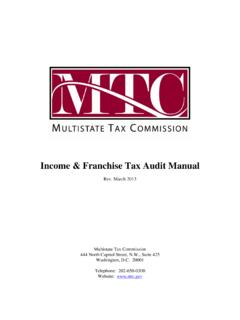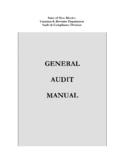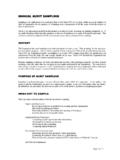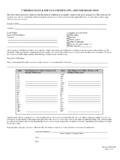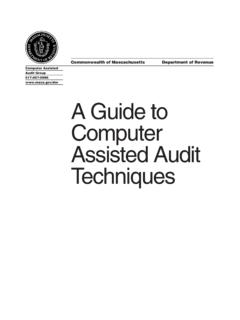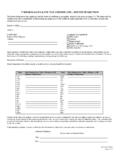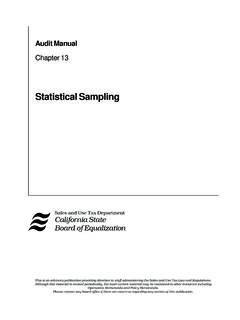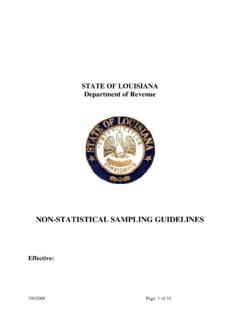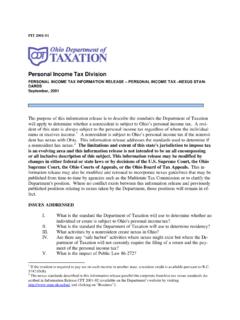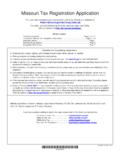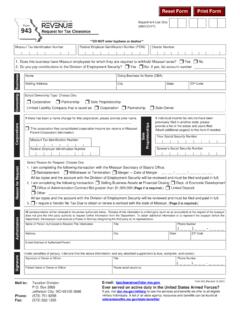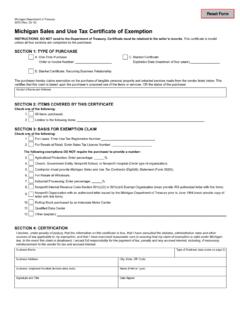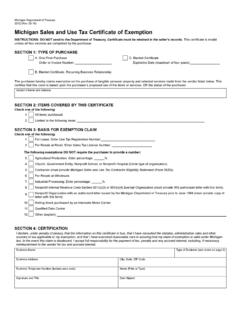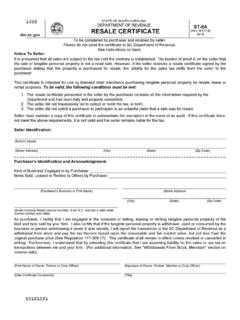Transcription of Multistate Tax Commission Allocation and Apportionment ...
1 Page 1 Multistate Tax Commission Allocation and Apportionment regulations Adopted February 21, 1973; as revised through July 29, 2010 (Applicable to Article IV of the Multistate Tax Compact and to the Uniform Division of Income for Tax Purposes Act.) The Allocation and Apportionment regulations were adopted by the Multistate Tax Commission on February 21, 1973. Reg. (a) and (b) were revised on July 14, 1988. Reg. (c).4. was added on August 8, 1997. Reg. (a).(5) was added on July 27, 2001. Reg. (a) and (c) were revised on August 1, 2003. Reg. (a).(4) was revised on August 1, 2003. Reg. (b) was revised on August 1, 2003. Reg. (b) was revised on August 1, 2003. Reg. (a) was revised on August 1, 2003. Reg. (b) was revised on January 15, 2004. Reg. (2) and (3) were revised on August 2, 2007.
2 Reg. (4)(C) was added on August 2, 2007. Reg. (a) was revised on July 29, 2010. Special Industry Rules have been adopted and added to these regulations (and further amended, where noted) as follows: Reg. (d). Construction Contractors, July 10, 1980. Reg. (e). Airlines, July 14, 1983. Reg. (f). Railroads, July 16, 1981. Reg. (g). Trucking Companies, July 11, 1986; amended July 27, 1989. Reg. (h). Television and Radio Broadcasting, August 31, 1990; amended April 25, 1996. Reg. (i). Telecommunications and Ancillary Services, July 31, 2008. Reg. (j). Publishing, July 30, 1993. The Recommended Formula for the Apportionment and Allocation of Net Income of Financial Institutions was adopted November 17, 1994.
3 They are subject to adoption by each member state in accordance with its own laws and procedures. The numerical references of the regulations are to Article IV of the Multistate Tax Compact and its subsections. Prologue. These regulations are intended to set forth rules concerning the Page 2 application of the Apportionment and Allocation provisions of Article IV of the Multistate Tax Compact. The Apportionment rules set forth in these regulations are applicable to any taxpayer having business income, regardless of whether or not it has nonbusiness income, and the Allocation rules set forth in these regulations are applicable to any taxpayer having nonbusiness income, regardless of whether or not it has business income.
4 The only exceptions to these Allocation and Apportionment rules contained in these regulations are those set forth in Regulation pursuant to the authority of Article of the Compact. These regulations are not intended to modify existing rules concerning jurisdictional standards. Reg. (a). Business and Nonbusiness Income Defined. (1) Apportionment and Allocation . Article (a) and (e) require that every item of income be classified either as business income or nonbusiness income. Income for purposes of classification as business or nonbusiness includes gains and losses. Business income is apportioned among jurisdictions by use of a formula. Nonbusiness income is specifically assigned or allocated to one or more specific jurisdictions pursuant to express rules.
5 An item of income is classified as business income if it falls within the definition of business income. An item of income is nonbusiness income only if it does not meet the definitional requirements for being classified as business income. (2) Business Income. Business income means income of any type or class, and from any activity, that meets the relationship described either in (a).(4), the "transactional test", or (5), the "functional test". The classification of income by the labels occasionally used, such as manufacturing income, compensation for services, sales income, interest, dividends, rents, royalties, gains, operating income, nonoperating income, etc., is of no aid in determining whether income is business or non-business income. (3) Terms Used in Definition of Business Income and in Application of Definition.
6 As used in the definition of business income and/or in the application of the definition, (A) Trade or business means the unitary business of the taxpayer, part of which is conducted within [this State]. (B) To contribute materially includes, without limitation, to be used operationally in the taxpayer s trade or business. Whether property materially contributes is not determined by reference to the property s value or percentage of use. If an item of property materially contributes to the taxpayer s trade or business, the attributes, rights or components of that property are also operationally used in that business. However, property that is held for mere financial betterment is not operationally used in the taxpayer s trade or business. (4) Transactional Test. Business income includes income arising from transactions Page 3 and activity in the regular course of the taxpayer s trade or business.
7 (A) If the transaction or activity is in the regular course of the taxpayer s trade or business, part of which trade or business is conducted within [this State], the resulting income of the transaction or activity is business income for [this State]. Income may be business income even though the actual transaction or activity that gives rise to the income does not occur in [this State]. (B) For a transaction or activity to be in the regular course of the taxpayer s trade or business, the transaction or activity need not be one that frequently occurs in the trade or business. Most, but not all, frequently occurring transactions or activities will be in the regular course of that trade or business and will, therefore, satisfy the transactional test. It is sufficient to classify a transaction or activity as being in the regular course of a trade or business, if it is reasonable to conclude transactions of that type are customary in the kind of trade or business being conducted or are within the scope of what that kind of trade or business does.
8 However, even if a taxpayer frequently or customarily engages in investment activities, if those activities are for the taxpayer s mere financial betterment rather than for the operations of the trade or business, such activities do not satisfy the transactional test. The transactional test includes, but is not limited to, income from sales of inventory, property held for sale to customers, and services which are commonly sold by the trade or business. The transactional test also includes, but is not limited to, income from the sale of property used in the production of business income of a kind that is sold and replaced with some regularity, even if replaced less frequently than once a year. (5) Functional test. Business income also includes income from tangible and intangible property, if the acquisition, management, and disposition of the property constitute integral parts of the taxpayer s regular trade or business operations.
9 Property includes any interest in, control over, or use in property (whether the interest is held directly, beneficially, by contract, or otherwise) that materially contributes to the production of business income. Acquisition refers to the act of obtaining an interest in property. Management refers to the oversight, direction, or control (directly or by delegation) of the property for the use or benefit of the trade or business. Disposition refers to the act, or the power, to relinquish or transfer an interest in or control over property to another, in whole or in part. Integral part refers to property that constituted a part of the composite whole of the trade or business, each part of which gave value to every other part, in a manner which materially contributed to the production of business income.
10 (A) Under the functional test, business income need not be derived from transactions or activities that are in the regular course of the taxpayer's own particular trade or business. It is sufficient, if the property from which the income is derived is or was an integral, functional, or operative component used in the taxpayer's trade or business operations, or otherwise materially contributed to the production of business income of the trade or business, part of which trade or business is or was conducted within this State. Property that has been converted to nonbusiness use through the Page 4 passage of a sufficiently lengthy period of time (generally, five years is sufficient) or that has been removed as an operational asset and is instead held by the taxpayer s trade or business exclusively for investment purposes has lost its character as a business asset and is not subject to the rule of the preceding sentence.
